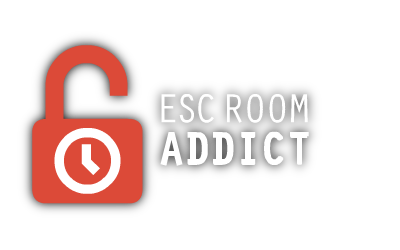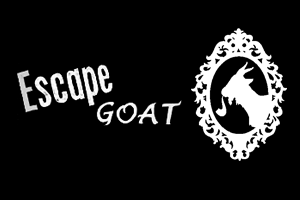The Posie Ring & The Chapbook
The Posie Ring & The Chapbook
- Played September 2020
- 1-3 hours
- 1-4 players
- Subscription rate varies
- Ages 13 years+
- What People Say
Sometimes we’re asked what the personalities on the Esc Room Addict team are like. Although it’s far too generalized a question to answer properly (there’s a lot of similarities, but also a lot of differences), we actually enjoy talking about the things that bond us together. One common trait amongst most of our members is how we tend to sit back, watch, and analyze pretty much anything and everything. We also like to study behaviour patterns of ourselves and others in escape rooms (and how that relates to society at large). Over the past seven years, we’ve even become pretty good at predicting how people will feel about an escape game through certain responses we see during their game experience. Those who come out of an escape game with a high degree of energy and enthusiasm, will most likely want to play another game immediately. Those who come out with low energy, or a strained appearance of contemplation, will usually shy away from playing again. We see this in other entertainment industries also…
When a Hollywood movie earns more than expected, and people can’t wait to talk about it with others, that’ a pretty strong indication there’s going to be a sequel (never let it be said that Hollywood isn’t the pinnacle of capitalism)! Sometimes the sequel is better than the original, but more often than not, it’s merely a rushed attempt for studios to make a quick cash grab (for the love of God Disney, PLEASE stop making Star Wars movies… the franchise is dead already!) With so many in-home escape games flooding into the marketplace these past couple years, do we see the same thing happening? Is it possible the early success of these type of games will create laziness and a lack of quality with each subsequent game that comes out in a series? In some cases, yes, it’s fair to say that is happening. Enter into the conversation, ‘The Posie Ring & The Chapbook’, sequel of the highly successful ‘Captain Madok’s Lost Treasure’ by Society of Curiosities. Will these games also fall into the dreaded sequel trap? Let’s dive in and take a look…
The component quality of these games was impressive. If anything they may have even slightly passed the standards they set for themselves in their first game (and that’s saying a lot). The quality of materials used (real metal, parchment paper, websites, and a variety of other quality components), alongside the amount of items you find in the package, was incredible. Although it is fair to say the overall quality of all in-home escape games has improved over the past couple years, it seems that companies like Society of Curiosities are directly responsible for this noticeable increase so we can’t thank them enough for ‘bringing it’ when it comes to component quality. If there were to be any critiques here, it would be a very minor one. Some of the pieces were very small and/or light, so you’ll want to make sure you keep them in a secure pile. Our team played this game outdoors (due to covid restrictions) and it made for some frustrating moments when pieces would easily get misplaced or blown away. Not so much the fault of the game (it’s an IN-home game after all), but with covid restrictions forcing more people outdoors, it would be a nice little addition to have pieces that are a bit more weighted or large enough to find in a pile. Aside from that, it really doesn’t get much better than this.
Which leads to the immersive experience… If you haven’t already done so, we’d STRONGLY suggest reading our previous review on Captain Madok’s Lost Treasure. Especially in light of how this game somehow managed to pick up where Captain Madok left off and recapture that same feeling of ‘’We’re really on this adventure!’’. We don’t want to assume everyone reading this has played the game, so we’ll have to be vague. But trust us when we tell you the Society of Curiosities team are among the industry’s best at making immersive games! The game not only makes YOU (and your team) the main characters of the story, but you get to interact with, and rely upon other characters who pull you deeper into the story. And that’s just it…this story unfolded right in front of us… like a good mystery should. The story isn’t completely revealed at the beginning forcing you to merely go through the motions of completing what you already know will happen at the end. You’re doing more than just ‘busy work’ – you’re actually PLAYING the game! The game moved us through points of tension, questioning, revelation, and reward. And that’s what a good escape experience SHOULD be doing. And even though many designers still don’t understand how to accomplish this, it seems that the Society of Curiosities team specializes in it (and we couldn’t be happier). At various points in the game our team could actually ‘feel’ the scenery of the game around us even though we were sitting at a picnic table in a public park. The only thing missing was some sound effects or music (which admittedly is hard to pull off, but they did a good job at attempting this in Captain Madok). Just to reiterate the point once again, the immersive aspects of these games weren’t just top notch, they were… industry… leading!
Did the puzzles also have us going head over heels? Not quite as much, but they were still a solid part of the experience. Remember how we said we study and analyze behaviour patterns involving people and escape rooms? Here’s another interesting fact to remember the next time you play an escape game (either live or in-home), people will always gravitate the weight of their impressions based on their own preferences. It’s actually the reason why the ERA team only reviews games in teams and we won’t reflect the opinions of any one or two individuals. Balance of perception is the name of the game. But what happens when everyone on a team loves something so much that they can’t get enough of it? Well, truth is they don’t take the time to fully appreciate the other design aspects. And there’s a good chance that is what happened here with these games for our team. The biggest problem with having such a strong, immersive game, is how it casted a big shadow over the rest of the game experience. In this case… the puzzles. Were they bad? No, not at all! We really liked them for the most part. But did we notice little things here and there more easily because they didn’t wow us like the component quality and the immersive adventure? Yep, that seems to be the case. On the one hand we enjoyed how the puzzles were inclusive and sometimes allowed for multiple puzzles to be worked on at a time. We also enjoyed the intricate design work of the puzzles. But at the same time our team couldn’t help but notice some repetition in the style of the puzzles offered, and that for a couple of the puzzles they weren’t as naturally intuitive as we would’ve hoped. It’s also important to note that this game is best designed for two to three experienced players and we were playing it with a group of four. This often made one person feel out of the loop at any given time, so we had to be very intentional about not letting any one member stay out of the experience for too long. The team also had a good laugh (at ourselves) over the hint system in this game. One of our ongoing critiques with all in-home escape games is how poorly the hint systems are usually designed. Typically a game will give you one (sometimes two) hints: The first hint is usually painfully vague (or too obvious) and then the answer is immediately revealed afterwards. This always leaves a sour taste in our mouths because we’re like most escape enthusiasts – we want a nudge in the right direction, and possibly a second nudge, but we DON’T want to be told the answer so quickly without giving us a chance to figure it out. So how did The Posie Ring & The Chapbook make us laugh then? Imagine going to the hint section and finding not one, not two, not five, but nearly 10 hints? Yes yes, this definitely proved the age old adage: ‘Be careful what you wish for!’ Through these games we learned the magic number of hints is most likely between three and five, and it was a fun time of self-reflection on our preferences.
Ok so final thoughts? WE LOVED THESE GAMES! They are certainly worthy of being sequels to ‘Captain Madok’s Lost Treasure’. In some ways The Posie Ring & The Chapbook take the best parts of the previous game and continue to run with it, and in other ways, we could see how it branched out and put an emphasis on different areas… and for us it worked! The only issues we really had was our team size being too big (again, this is best played for 2-3 people), and perhaps the lack of any sound (be it sound effects, music videos, a soundtrack… etc). Also, be warned this isn’t an ‘easy’ or ‘introductory’ game. You’re going to want to play a couple in-home escape games before you play the Captain Madok series so you can get comfortable with the genre first. For perspective, it took our ERA team members just under three hours to solve. The theme is fairly neutral and engaging enough that everyone would enjoy the experience, but again, you should go into this with an expectation of fully investing your time and attention into the game. In short, it’s another immersive masterpiece for immersive game junkies like us… we couldn’t have asked for much more.
We want to hear your thoughts on this game! Be sure to comment in the section below or send us a message via ERA’s email, Facebook, Instagram, YouTube, or Twitter… As always, happy escaping!
Final Verdict: | 8.1/10 |





